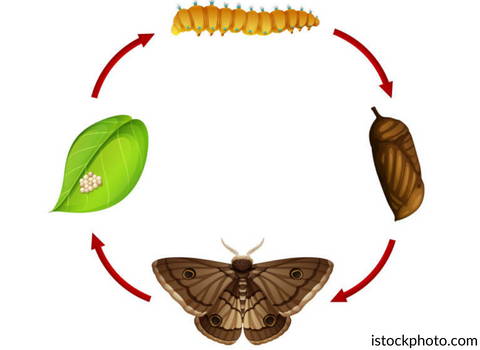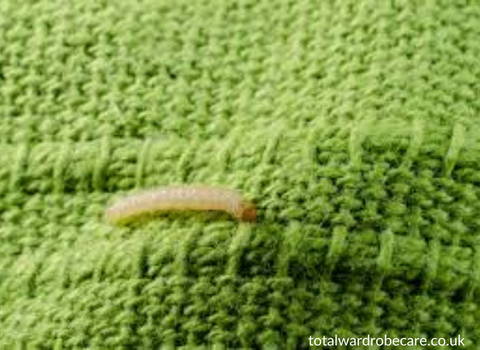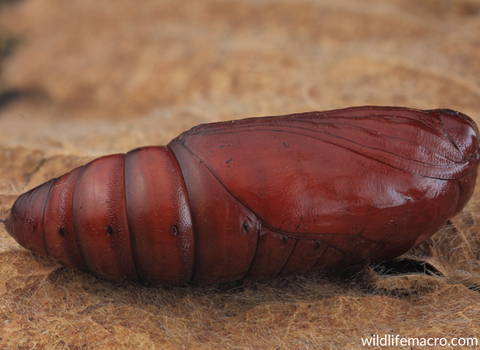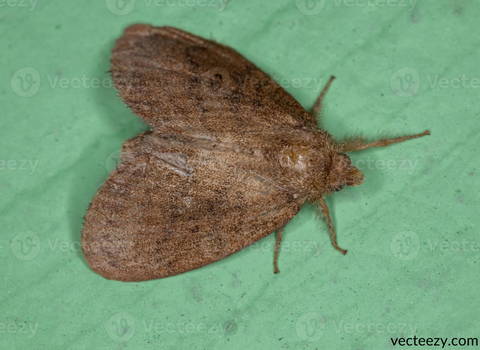Exploring the Different Stages of a Moth's Lifecycle
Moths, regardless of the species, are interesting creatures. There is a wide range of moth species across the world, but the most common moth species are those found in your closet eating your clothes and pantry moths, those scrambling in your pantry. With thousands of species, it is impossible for them to go extinct anytime soon.
These insects may look like simple insects, but they go through amazing transformations as they take every stage of a moth’s life cycle.
The Life Cycle of a Moth
Just like most insects, moths do not just start as adult moths. They go through an entire loth life cycle with various stages. The stages start from them being moth eggs, then to larva or most people know as the caterpillar, then they take on being pupa until they become an adult moth.
The first stages of the life cycle are important to the growth and development of what will become adult moths. There are interesting things that you should know about every stage of a moth's life cycle, and we are going to explore more about it below.
Stages of a Moth Life Cycle
Stage 1
Embryonic Stage
This is the stage of their life cycle where the embryo is developing inside the eggs. The stage is just like how fish and bird embryos develop inside their eggs.
Male moths and adult females should mate for this stage to start. The mating ritual that they go through is somehow complicated and intense, but this always results in the fertilization of the eggs inside the females.
The females are responsible for looking for a place where they can lay eggs. They will usually pick a place where there is a lot of plant matter to lay their eggs. This will act as the food source for the moth larvae or the caterpillars as soon as the eggs hatch.
This is also the main reason clothes moths can be found in closets. Caterpillars are the ones eating certain clothing fibres, which is also the same matter for adult moths. The natural fibres are their food source. It is the same reason for other species like pantry moths, grain moths, or flour moths eating food products in your pantry like wheat flour. Thus, the need for storing these items in airtight containers.
It takes time for eggs to gestate after they are laid. It takes a maximum of 10 days for eggs to gestate. However, certain environmental factors must be met for the embryos inside fertilized eggs to mature completely. Warm temperatures and fair humidity are crucial for embryo development. Though the gestation period may differ for every species, the longest that it may take for most moths will always be 10 days.
Females can lay 40 to 50 eggs and die shortly after. Some species can lay about 300 eggs in their lifetime and go on the same length of gestation period.
Stage 2
Larval Stage
As soon as moth larvae hatch, the first thing that larvae feed on is the shell where they emerged. The shell alone has lots of vitamins, proteins, as well as other nutrients that are needed for larval development.
The first instar is the stage when the larva hatches. Instars are developmental stages for moth caterpillars. They go through processes of shedding and moulting similar to snakes, spiders, and other animals to keep growing. The cuticle is then left behind each time they moult.
Larvae eat the cuticles whenever they shed as these are rich in nutrients, proteins, and other substances essential for their growth. They enter the second instar after they shed the first time.
The number of instars that larvae have to go through depends on the climate, food, and species. Larvae can eat about 2,700 times their weight for them to get bigger and as they prepare for the next stages of their life cycle.
Different moth species spend different lengths of time in this stage. They will continue eating and moulting until they reach their final instar. Larvae usually wander away from where they are living when they are ready to become a cocoon and prepare themselves to become an adult.
The new site will be safe for transformation and is usually humid, warm, and far from potential predators. Once the site is secured, the larvae will shed their last cuticle and enter the next stage of their life cycle.
Stage 3
Pupal Stage
In the moth life cycle, the pupal stage is by far the most interesting part. It is the stage where the larvae are transforming themselves into fully grown adult moths. This is the stage where they develop their wings and other parts of their adult body. It is the stage when the larvae are in their cocoons and would enter their adult life.
Larvae can spin a certain type of silk that is made out of proteins, this is what their cocoon is made of. As they undergo their transformation, they are protected inside and keep them contained until they reach the last stage.
Most people assume that this is the larva’s resting stage. Though the larva is not out for food and not going from one to another, they are not at rest. Everything that the larvae eat during the larval stage is used during this stage. This stage is also known as metamorphosis and takes a lot of energy.
Larvae do not grow into adult moths instantly. They go through a process called histolysis. This process is when transformative cells break the larvae down until it looks more or less like a build-up of goop.
The reforming process is known as histogenesis, which is derived from the Latin words “histo” which means “tissue” and “genesis” which translates to “the beginning.”
This stage can take at least 21 days to be completed, but it still depends on the environment. There are certain signals that the pupa will receive for them to know when to emerge from their cocoons. These can be chemical signals from themselves or other environmental factors.
Stage 4
Imaginal Stage
In the final stage of the moth life cycle, they have emerged from their cocoons and have wings to fly around. Technically, once a moth reaches the adult stage, it is called an “imago.” Thus, the last stage is called the imaginal stage.
It will take time before an adult moth emerges from the cocoon. This is the time when they are still weak, soft, and fragile. It is a complicated process for them to get out of their cocoons. Once they come out of their cocoons, they will have shriveled wings and severely bloated abdomens. Their like adult spongy moths are still unable to fly for the first few hours after emerging.
Adult moths live for some time, but their life span still depends on the species. Some may live for a few weeks, while some can live for a maximum of 10 months. Generally, they are about 1 to 3 cm in size, but there are larger species around.
Most moths do not fully live until they reach their old age. Most are killed by predators or weather. On the other hand, female moths usually die after laying eggs. Thus, completing their life cycle and starting a new one.






